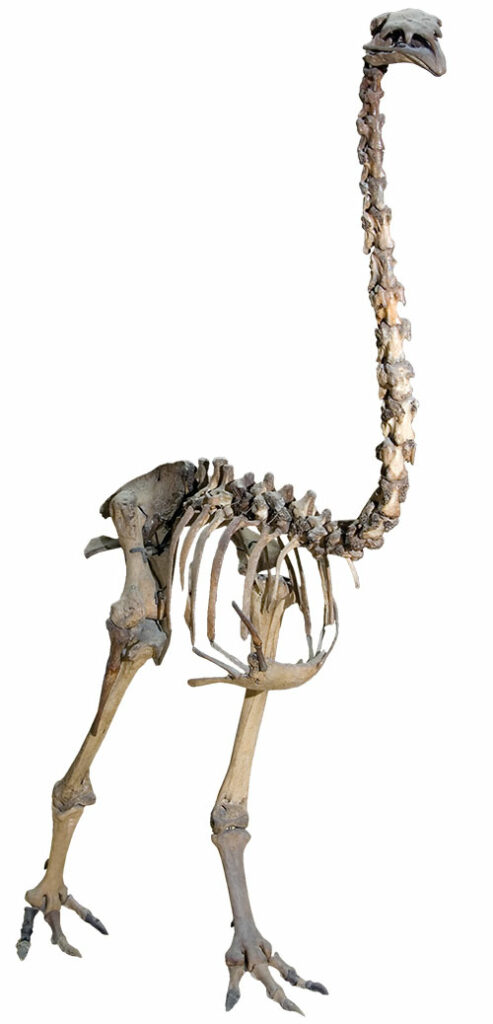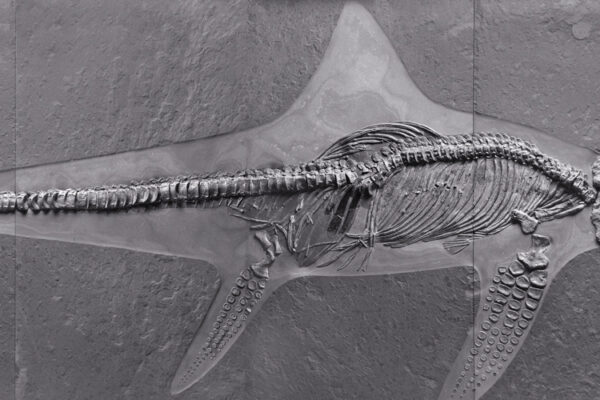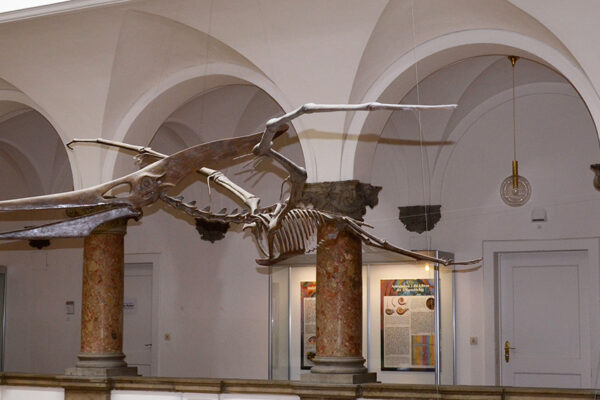Giant Flightless Bird (Moa)
Dinornis robustus

Quaternary: Holocene (subrecent),
A few hundred to several thousand years old
Otago, South Island, New Zealand
Before the arrival of humans, probably between 1250 and 1300 A.D., there were no mammals of any kind on the archipelago of New Zealand, except for two species of bats. The ecological niches otherwise filled by mammals were thus occupied by often flightless birds, of which the Moas were certainly the most impressive. The two species of the genus Dinornis are the largest known flightless birds with a body height of up to 3.5 meters. Especially the southern Moa showed a distinct difference between the sexes: The females were up to 1.5 times larger than the males.
While the only natural enemy of the Moas was the equally gigantic and now extinct Haast eagle, these animals were valued as meat suppliers by the indigenous Polynesian population of New Zealand, the Maori. Intensive hunting and habitat destruction to gain farmland thus wiped out the Moas soon after the Maori arrived in New Zealand; although alleged (and unconfirmed) sightings of Moas were reported until the 19th century, science assumes that these animals became extinct as early as 1400.
SNSB-BSPG 1958 I 181
Original with a few additions






